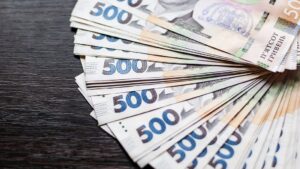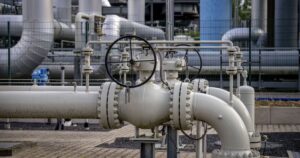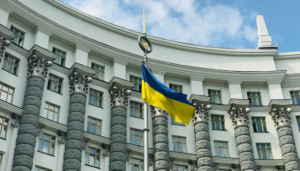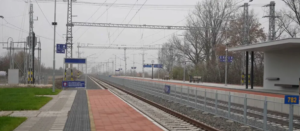
Taxes, fees, and mandatory payments to the general and special funds of the state budget of Ukraine for January-November 2025 amounted to UAH 3.29 trillion, while cash expenditures amounted to UAH 4.54 trillion, which is approximately 24.1% and 20.3% higher than the corresponding figures for the same period in 2024.
According to operational data from the State Treasury Service, which the Ministry of Finance published on its website, general fund revenues increased by 23.5% to UAH 2.34 trillion, while expenditures increased by 18.1% to UAH 3.54 trillion.
In November this year, state budget revenues increased by 6.6% compared to November last year, to UAH 321.5 billion, including the general fund – by 4.2%, to UAH 229.3 billion. This is due to the receipt of grants worth UAH 34.3 billion last month, while in November last year such funding amounted to UAH 56.4 billion.
It is noted that the largest source of revenue in January-November this year remains VAT on goods imported into the customs territory of Ukraine – UAH 486.6 billion (UAH 424.0 billion in the first 11 months of 2024).
After raising the military tax from 1.5% to 5% and introducing a condition for reserving a salary of UAH 20,000 this year, personal income tax and military tax came in second place in terms of revenue for the 11 months of this year – UAH 324.6 billion compared to UAH 200.7 billion last year.
In third place this year is VAT on goods produced in Ukraine – UAH 278.3 billion for refunds of UAH 166.2 billion (UAH 242.7 billion for refunds of UAH 139.9 billion), while corporate income tax amounted to UAH 277.3 billion (UAH 251.3 billion), and excise tax amounted to UAH 255 billion (UAH 189.5 billion).
In addition, dividends and parts of the net profit of state-owned companies amounted to UAH 67.8 billion (UAH 69.2 billion), import and export duties – UAH 49.7 billion (UAH 43.8 billion), and rent payments for the use of subsoil resources – UAH 39.6 billion (UAH 42.8 billion).
The Ministry of Finance added that another UAH 84.2 billion (UAH 38.6 billion) was added to the budget from the National Bank’s profits, and grants amounted to UAH 381.2 billion (UAH 325.6 billion).
Revenues from the unified social tax to pension and social insurance funds in January-November 2025 increased by 21.1% to UAH 593.1 billion, including in November by 13.6% to UAH 55.8 billion.
The Ministry of Finance also reported that as part of the financing of the general fund of the state budget, state borrowings to it in January-November 2025 amounted to UAH 1.96 trillion, or 94.3% of the plan, including UAH 512.7 billion received on the domestic market from the placement of government bonds, including UAH 124.6 billion in foreign currency – $2.26 billion and EUR 645 million. At the same time, UAH 242.1 billion was raised through the issuance of military government bonds.
According to the release, approximately $34.7 billion, or UAH 1.44 trillion, was received from external sources, including approximately $24.0 billion under the ERA, with the total volume of this mechanism amounting to $50 billion.
In addition, Ukraine received another EUR 7.95 billion from the EU under the Ukraine Facility preferential long-term loan, $0.96 billion from the International Monetary Fund (IMF), and $0.57 billion from the World Bank for the projects “Transforming Health through Reform and Investment in Efficiency” (THRIVE), “Creating Resilient Infrastructure in Vulnerable Environments in Ukraine” (DRIVE), “Supporting Recovery through Sound Fiscal Management” (SURGE), “Supporting Internally Displaced Persons in Ukraine” (HOME), and “Modernizing Ukraine’s Social Support System.”
Payments on the repayment of public debt for January-November 2025 amounted to UAH 570.9 billion, or 94.2% of the plan, and payments on servicing amounted to UAH 319.9 billion, or 98.2% of the plan.
As reported, as a result of two major increases in July and October, the 2025 state budget currently has planned revenues (excluding grants) of UAH 2.50 trillion, while expenditures are UAH 4.65 trillion, including the general fund – UAH 2.28 trillion and UAH 4.29 trillion, respectively.
In 2024, the state budget received UAH 3.12 trillion in revenues, which is UAH 0.45 trillion, or 16.8%, more than the 2023 state budget. Under the general fund, revenue growth amounted to UAH 0.51 trillion, or 30.9%, to UAH 2.18 trillion, in particular, international financial assistance in the form of grants amounted to UAH 0.45 trillion compared to UAH 0.43 trillion in 2023.
State budget expenditures in 2024 increased by UAH 0.46 trillion, or 11.6%, compared to 2023, to UAH 4.48 trillion, in particular, under the general fund – by 15%, or UAH 0.45 trillion – to UAH 3.49 trillion.
On December 3, the Verkhovna Rada approved Ukraine’s state budget for 2026 with revenues of UAH 2.90 trillion and expenditures of UAH 4.82 trillion.

The German Bundestag has passed new laws that facilitate the deportation of individuals to so-called safe countries of origin and tighten the conditions for obtaining citizenship, reports Die Welt.
Under the new rules, the German government will be able to designate countries as safe countries of origin by means of a regulatory act without the approval of the Council of Federal States. This will simplify the deportation of individuals from such countries, although the Federal Office for Migration and Refugees (BAMF) retains the option of granting protection in exceptional cases.
In addition, the law abolishes state funding for mandatory lawyers for persons in deportation detention. The German Bar Association and the Federal Bar Association have criticized this decision. “Deprivation of liberty is one of the most serious restrictions on fundamental rights. To date, more than half of all detentions are unlawful. The state must undergo particularly thorough scrutiny,” the association said.
A ten-year ban on obtaining citizenship is also being introduced for individuals who deliberately provide incomplete or false information during the procedure, particularly in connection with the scandal involving fake language proficiency certificates. “Anyone who tries to cheat during the citizenship procedure does not deserve a German passport,” said Alexander Trom (CDU), a representative of the Union faction on internal policy.

Italy will provide €30 million for the restoration of the Odesa Children’s Hospital.
According to the Italian Embassy, the agreement was signed by Italian Ambassador Carlo Formosa and Deputy Prime Minister for the Restoration of Ukraine Oleksiy Kuleba during the first Italian Cooperation Day in Ukraine in Kyiv.
The project involves the construction of a new modern pediatric complex with 260 additional beds, which will provide medical care to children in the region and make the hospital a leading center for the entire south of Ukraine.
In total, Italy’s patronage of Odessa, amounting to more than €93 million, is directed toward projects in the fields of healthcare, agriculture, and cultural heritage preservation.
In addition, as part of the Second Emergency Initiative implemented by the Italian Agency for Development Cooperation (AICS), €45 million has been allocated for humanitarian projects.
“The new Odessa Children’s Hospital is an investment in the future generations of Ukraine, in those who have suffered most unjustly from this terrible war,” said Italian Ambassador to Ukraine Carlo Formosa.
He noted that since the start of the full-scale invasion, Italy has supported 90 Ukrainian hospitals, provided assistance to 140,000 medical workers, and contributed to the restoration of 120 schools.

The vast majority of European countries in 2022-2024, before President Donald Trump returned to the US presidency in January 2025, bought much more oil and gas from Russia than they provided support to Ukraine, said US Deputy Secretary of State Christopher Landau.
“I knew that many of these countries had tied their energy fortunes to Russia, but I had no idea of the scale of this or how much (collectively) it overshadowed their aid to Ukraine,” he wrote on social media on Saturday.
Landau illustrated his post with a chart provided to him by the US State Department. He specified that he had requested this data in connection with his trip this week to a meeting of NATO foreign ministers, replacing Secretary of State Marco Rubio. After the meeting, Landau sharply criticized the EU countries.
According to the chart, only five of the 24 European countries provided Ukraine with financial assistance (grants and loans) that exceeded Russia’s payments for oil and gas: the United Kingdom, Denmark, Sweden, Norway, and Switzerland. In the case of Switzerland, there are no oil and gas payments to Russia, while in the case of the Scandinavian countries, they are small – up to $1 billion, with aid to Ukraine ranging from $5 billion to $10 billion (here and below are approximate figures, as the chart does not contain exact data). Overall, Denmark, Sweden, and Norway ranked 3rd, 6th, and 8th, respectively, in terms of aid to Ukraine among the 24 countries listed.
And even in the case of the UK, which paid Russia about $3.5 billion for hydrocarbons, this is still much less than the aid provided to Ukraine, which is estimated at $15 billion — the second highest figure among the 24 countries.
Finland’s aid to Ukraine and purchases of Russian oil and gas are roughly equal, while in the case of Lithuania and Latvia, oil and gas payments to Russia already exceed aid to Ukraine, according to the US State Department’s estimates. (Estonia is not included in the chart, as are other countries whose aid or hydrocarbon imports from Russia during this period were less than $1 billion.
Germany, Ukraine’s largest European donor with approximately $17.5 billion in aid, purchased $20 billion worth of Russian oil and gas in 2022-2024. The Netherlands, which ranks fourth on the list of aid with approximately $8.5 billion, imported nearly $5 billion worth of hydrocarbons from Russia.
In France, this ratio is approximately $6 billion against more than $20 billion, in Poland $5.5 billion against $12 billion, and in Italy $3 billion against $27.5 billion: this is the 10th indicator in terms of aid to Ukraine and the 2nd in terms of imports from Russia.
The absolute record holder in this regard is Turkey, whose financial support to Ukraine is difficult to estimate even at $0.2 billion, while purchases of Russian oil and gas amount to about $32 billion.
Hungary, with even smaller amounts of aid, sent Russia about $22 billion for oil and gas, and Slovakia sent about $18 billion, although its support for Ukraine can be estimated at approximately $1.5 billion.
The Czech Republic’s financial assistance to Ukraine in 2022-2024 is about $1 billion, according to the US State Department’s estimates, which is also much less than the volume of Russian hydrocarbon purchases, which amounted to about $15 billion. Spain looks better in terms of these indicators
— $2 billion versus $12 billion — as does Bulgaria — $0.5 billion versus $9 billion.

The Cabinet of Ministers published Resolution No. 1596 of December 3, “Issues of Management of Certain Business Entities,” which, as previously reported by Prime Minister Yulia Svyrydenko, initiated the immediate termination of the powers of a significant part of the supervisory boards of key state-owned energy companies.
According to the document, the government expects the Ministry of Energy and the State Property Fund to terminate the powers of the members of the supervisory board of LLC “Gas Transmission System Operator of Ukraine” (OGTSU) Vitaliy Zubriy and Ruslan Strilets, JSC “Energy Company of Ukraine” – Oksana Osmachko and Oleksandr Muzhel, and JSC “Market Operator” Olena Kovalchuk and Andriy Stepanenko.
This list also includes three members of the supervisory board of PJSC Centrenergo, Volodymyr Velychko, Andriy Hota, and Serhiy Simonov, as well as five members of the supervisory board of JSC Ukrainian Distribution Networks, Yevhen Litvinov, Oleg Kantsurov, Andriy Kostrytsya, Svitlana Bilko, and Andriy Pochtaiev.
In addition, the Ministry of Economy, Environment, and Agriculture has been instructed to prepare proposals for convening an extraordinary general meeting of Ukrainian Energy Machines JSC with the aim of terminating the powers of independent member of the supervisory board Andriy Tkachenko.
CABINET OF MINISTERS, CENTRENERGO, MARKET OPERATOR, SUPERVISORY BOARD, ЕКУ, ОГТСУ, УРС

According to Serbian Economist, regular rail service between Belgrade and Budapest will start on February 20: passengers will once again be able to travel between the two capitals by train without changing trains. After modernization, the line is designed for train speeds of up to 160 km/h, which significantly reduces travel time and makes the train competitive with road transport.
In fact, this is not only about the “return of the train” between the two capitals, but also about Serbia’s inclusion in the wider Central Europe-Balkans-Aegean Sea transport corridor. Belgrade is gaining a stronger role as a transit hub for freight and passenger flows, and the route is becoming more attractive for logistics and industrial projects.
https://t.me/relocationrs/1894